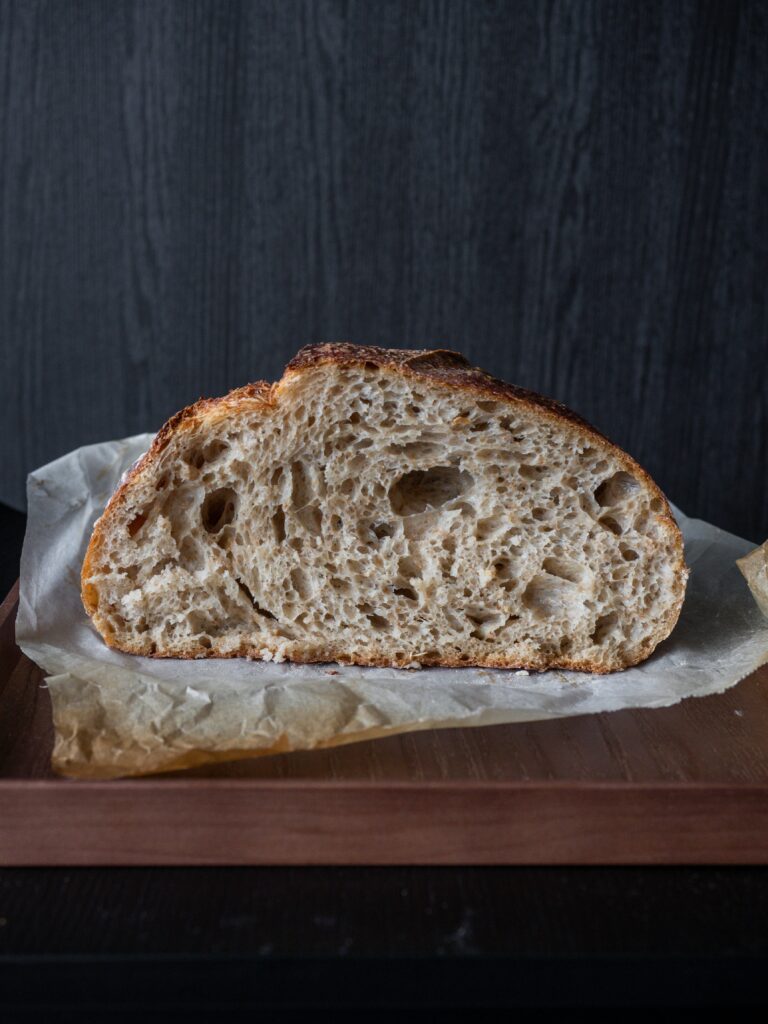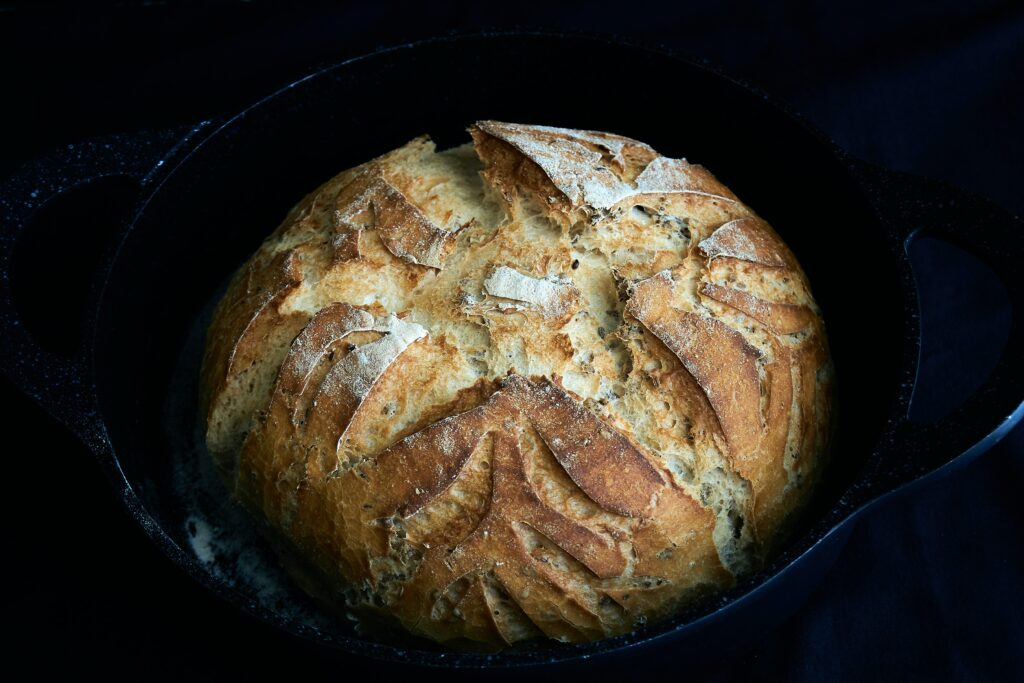This week I decided to start by baking sourdough bread. Sourdough bread is near and dear to my heart because my mum actually has a bakery and is (locally) famous for her amazing sourdough bread. My mum gifted me some of her starter, it almost feels like a family heirloom

What is sourdough? Sourdough ‘starter’ is a natural leaven that is made from flour and water. This combo sits on your counter to create an active colony of natural yeast and (good) bacteria. To create a starter, it takes one to two weeks and it requires a process of ‘feeding’ the starter and discarding it. However, I was able to skip this step because I inherited some of my mum’s starter.
My mum also lended me one of her recipe books, Tartine Bread by Chad Robertson. She warned me that it’s very wordy and overly fastidious. I’m making the country bread from the Tartine Bread book. My mum was right, the instructions are made overly complicated. I suppose the purpose is so that you fully understand the process, but it makes it somewhat unapproachable.
Making sourdough is a simple but a lengthly and time consuming process. The country bread recipe I’m making requires up to 8 hours, not including bake time! This is my second time making sourdough, the first time I spent nearly all day doing it. This time I split it over two days, I did the bulk fermentation (or bulk rise) and then put it in the fridge overnight. During the bulk fermentation you have to ‘turn’ the bread every 30 minutes. Sourdough bread is not kneaded like traditional yeast bread, instead the dough is stretched and folded in the container it rises in, this is called a turn.
After that, you do a bench rest – which is where the dough rests on the counter. Following this you shape the dough in a serious of folds and let it rest, then it does the final rise in a bamboo proofing basket. My mum bakes her sourdough loaves on a baking stone, I don’t have a stone so I bake my in a dutch oven pot. The pot is almost a fail safe, it produces a perfect round loaf.

I’m happy to report that the bread turned out delicious, but I’m not convinced I have the oven settings quite right. That will be something to address on my next bake.

